mobile View, to the German Version tap the flag
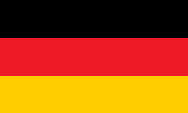

- Republic of Bulgaria
- republic with multi-party-system
- own name: Republika Bâlgaria
• Flags
• Historical Flags
• Meaning/Origin of the Flag
• Coat of Arms
• Meaning/Origin of the Coat of Arms
• Aircraft Roundel
• Map
• Numbers and Facts
• History
• Origin of the Country's Name
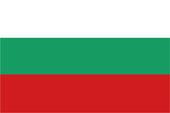
since 1990,
National and merchant flag,
ratio = 2:3,
Source, by:
Flags of all Nations





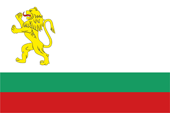
1991 (?),
Naval flag (?)
ratio = 2:3,
Source, by:
Flags of all Nations



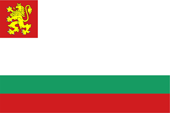
since 1991,
Naval flag,
ratio = 2:3,
Source, by:
Flags of the World,
Wikipedia (BG)



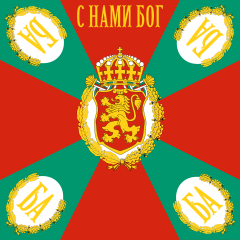
since 1998,
War flag,
(actually troop flag ?),
ratio = 1:1,
Source, by: Scroch, CC BY-SA 4.0, via Wikimedia Commons



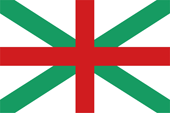
since 1991,
Naval jack,
ratio = 2:3,
Source, by:
Flags of the World,
Wikipedia (BG)



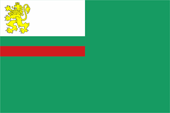
since 1990,
Flag of the coast guard and naval flag for aux ships,
ratio = 2:3,
Source, by: Flags of the World



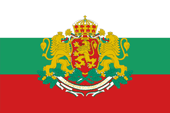
since 1997,
Flag of the president,
ratio = 1:2,
Source, by: Flags of the World




1.) 1878–1908 – Principality of Bulgaria
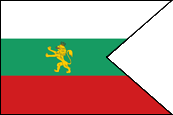
1877–1879,
National state and merchant flag,
Source, by: World Statesmen




1879–1908,
National state and merchant flag,
ratio = 2:3,
Source, by:
Flags of the World





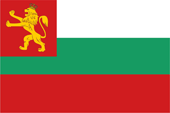
1879–1908,
War flag (Naval flag),
ratio = 2:3,
Source, by:
Flaggen Europas,
Wikipedia (BG)



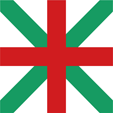
1878–1908,
Naval jack,
ratio = 1:1,
Source, by: Flags of the World



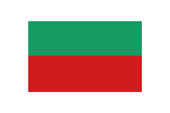
Pilot flag (Pilot Call flag),
ratio = 2:3,
Source, by: Flags of the World



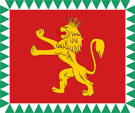
1878–1908,
Standard of the Prince,
ratio = 5:6,
Source, by: Flaggen Europas




2.) 1878–1908 – Vilayet of Eastern Rumelia
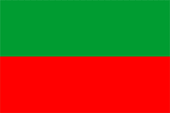
1878–1885 (?),
Flag,
ratio = 2:3,
Source, by: World Statesmen



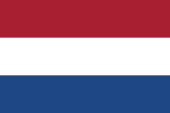
1885–1908 (?),
Flag,
ratio = 2:3,
Source, by: World Statesmen




3.) 1908–1946 – Kingdom of Bulgaria

1908–1947,
National and merchant flag,
ratio = 2:3,
Source, by: Flaggen Europas





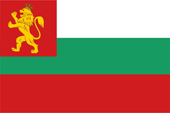
1908–1946,
State and naval and war flag,
ratio = 2:3,
Source, by:
Flaggen Europas,
Wikipedia (BG)




1908–1949,
Naval jack,
ratio = 1:1,
Source, by: Flaggen Europas,
Wikipedia (BG)



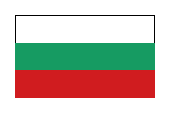
1908–1946,
Pilot flag (Pilot Call flag),
ratio = 2:3,
Source, by: Flaggen Europas,
FOTW
This type of flag was abolished in the 20th century, today is:
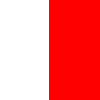 Pilot on board
Pilot on board
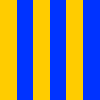 Call for Pilot
Call for Pilot



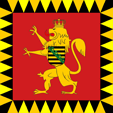
1908–1918,
Standard of the King,
ratio = 1:1,
Source, by: Flaggen Enzyklopädie



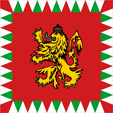
1918–1946,
Standard of the King,
ratio = 1:1,
Source, by: Flaggen Enzyklopädie



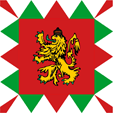
1918–1946,
Standard of the King at Sea,
ratio = 1:1,
Source, by: Flaggen Enzyklopädie



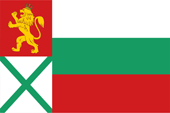
1908–1946,
Flag of the War Minister,
ratio = 2:3,
Source, by: Flaggen Europas



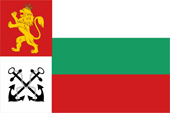
1908–1946,
Flag of the Navy Chief,
ratio = 2:3,
Source, by: Flaggen Europas



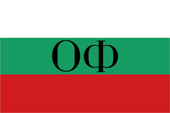
1944–1947,
temporary and partially used flag after the capitulation to the Sovjet Union,
ratio = 2:3,
Source, by: World Statesmen




4.) 1947–1990 – People's Republic of Bulgaria
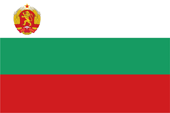
1947–1948,
National flag,
ratio = 2:3,
Source, by:
Flaggen Enzyklopädie,
Wikipedia (BG)



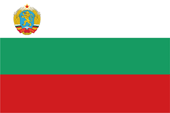
1948–1990,
National flag,
(with small changes in the coat of arms),
ratio = 2:3,
Source, by:
Flaggen und Wappen,
Wikipedia (BG)




1947–1990,
Merchant flag,
ratio = 2:3,
Source, by: Flaggen und Wappen





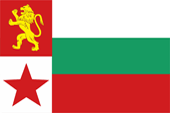
1949–1955,
Naval flag,
ratio = 2:3,
Source, by:
Die Welt im bunten Flaggenbild,
Wikipedia (BG)



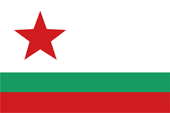
1955–1991,
Naval flag,
ratio = 2:3,
Source, by:
Flaggen und Wappen,
Wikipedia (BG)



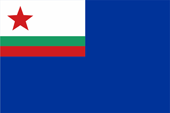
1955–1990,
Flag for aux ships,
ratio = 2:3,
Source, by: Flaggen und Wappen



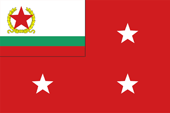
1955–1990,
Flag of the Navy Chief,
ratio = 2:3,
Source, by: Flags of the World



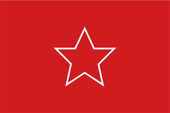
1955–1990,
Naval jack,
ratio = 2:3, 1:2
Source, by:
Flags of the World,
Wikipedia (BG)




The green-white-red flag of Bulgaria was introduced with the first constitution of 1879. The national flag was only in the period of communist rule (1848–1990) added by a coat of arms, and that on the mast in the white stripe. White stands for freedom and peace, green for the forests and the agriculture, red for the blood, which was shed for the attainment of the freedom. As Bulgaria in result of the Russian-Turkish war (1877–1878) was separated from the Turkey as principality, and after the peace treaty from San Stefano (3rd of march in 1878) re-rises as Great Bulgaria, it got after the Berlin treaty (13th of July in 1878) dismissed in a partial independence as Turkish vassal state, though with a by ca. 60% of the area reduced territory. Many Slavic nations choose after 1848 flags in the colors white, blue and red, because they saw in Russia a model, the Russians were the only free Slavic nation. All other Slavic nations lived under Austrian, Turkish or even German rule. That political current, which trys to agree all Slavs in one nation under the colors white, blue and red, is named panslavism, and the colors white, blue and red are named from there pan-Slavic colors. The Bulgarians owe the Russians their freedom, and introduced a flag, which equals the Russian flag, however got the blue stripe substituted by a green. The colors white, blue and red were though unofficial in use already since 1862, so before 1877/78. The colors given for the flags today are: green = pt 347, red = pt 032 and white.
Source:
Die Welt der Flaggen,
Flaggen und Wappen der Welt

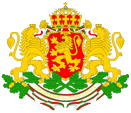
since 1997,
Coat of arms of Bulgaria,
Source:
Wikipedia (BG),
Пакко, Public domain, via Wikimedia Commons

1971–1990,
Coat of arms of Bulgaria,
Source:
Flaggen und Wappen,
Wikipedia (BG),
Original: Unknown authorVectorization: Scroch, Public domain, via Wikimedia Commons

The coat of arms of the People's Republic was adoped in 1946 and changed in details in 1948, 1967 and 1971. The basic structure of the flag was not concerned in this doing. In the year 1997 was introduced a new and civil coat of arms. The blazon is red, with the golden Bulgarian lion. The shield carrys a crown and is holded by two lions, which stand on oak twigs. Below a typeface ribbon in the colors fo the land with the inscription: "Svedinenieto pravi Silata" => "Unity provides strength". The golden Bulgarian lion on red ground is the traditional symbol of Bulgaria. He has its roots in the 14th century. It appeared from the beginning on the state and military flags. Between 1948 and 1990 he also appeared in the emblem on the national flag, and on naval flags it was replaced in this time by the red star of communism.
Source:
Die Welt der Flaggen,
Flaggen und Wappen der Welt

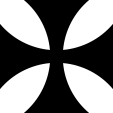
1915–1918,
Aircraft Roundel,
Source, by: Wikipedia (EN)
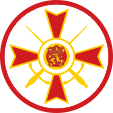
1937–1941,
Aircraft Roundel,
Source, by: Wikipedia (EN)
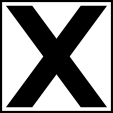
1941–1944,
Aircraft Roundel,
Source, by: Wikipedia (EN)
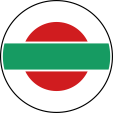
1944–1946,
Aircraft Roundel,
Source, by: Wikipedia (EN)
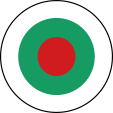
1946–1948,
Aircraft Roundel,
Source, by: Wikipedia (BG)
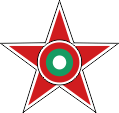
1948–1992,
Aircraft Roundel,
Source, by: Wikipedia (EN)
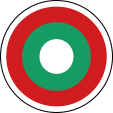
since 1992,
Aircraft Roundel,
Source, by: Wikipedia (EN)

Location:
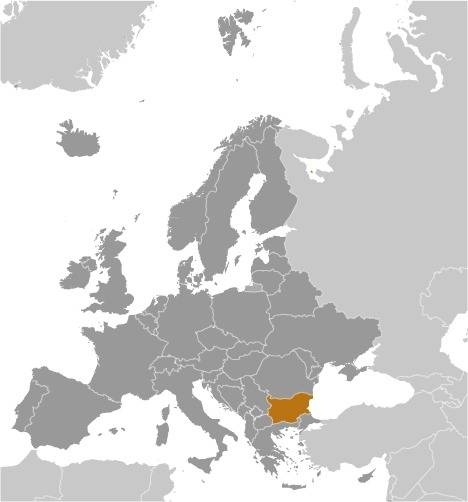
Source: CIA World Factbook
Map of the country:
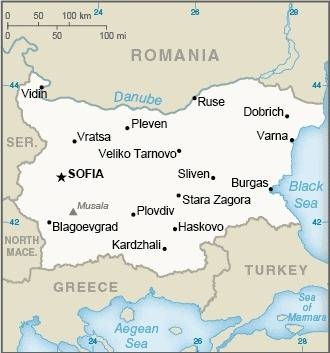
Source: CIA World Factbook

Area: 42.855 square miles
Inhabitants: 6.951.500 (2019), thereof 85% Bulgarians, 9% Turks, 5% Gipsies
Religions: 76% Orthodox Christian, 10% Muslim, 1% Roman Catholic, 1% Protestant
Density of Population: 162 inh./sq.mi.
Capital: Sofia, 1.241.675 inh. (2018)
official Language: Bulgarian
other Languages: Turkish, Romani
Currency: 1 Lew (BGN, Lw) = 100 Stotinki
Time Zone: GMT + 2 h
Source: Wikipedia (D)

29–46 A.D. · the region comes to the Roman Empire
681–1018 · 1st Bulgarian Empire
1018–1185 · the region belongs to the Byzantine Empire
1185–1396 · 2nd Bulgarian Empire
1396–1878 · the region belongs to the Ottoman Empire
3rd of March 1878 · 3rd Bulgarian Empire
13th of July 1878 · establish of the Principality of Bulgaria as a Turkish vassal state, and of the Vilayet of Eastern Rumelia (capital: Plovdiv/Filibe) as autonomous turkish province under a christian governor
1908 · full independence, foundation of the Kingdom of Bulgaria
1915–1918 · participation in the First World War on the side of the Middle Mights
1941–1944 · participation in the Second World War on the side of the Axis Mights
1944 · soviet invasion, communist revolt
1946 · overthrow of the monarchy, proclamation of the republic
1947 · proclamation of the people's republic
1990 · proclamation of the republic
1st of January 2007 · Bulgaria becomes a member of the European Union
Source: Flags of the World,
Atlas zur Geschichte,
Wikipedia (D),
World Statesmen

The name "Bulgaria" comes from the people of the Bulgars, a Turkic people from the steppes of Asia. "Bulgarian" means "half-breed" so that Bulgaria is the "land of half-breeds". In fact, the Bulgarians are still a mixed population of Thracians, Slavs and Turk-Bulgarians. The term Turk-Bulgarians means not the Turks living in Bulgaria, but the original Bulgars of the early Middle Ages.
Source:
Handbuch der geographischen Namen,
Discovery '97


Kindly supported by: Jürgen Zens und Mario Schweigler
![]()



















































































































